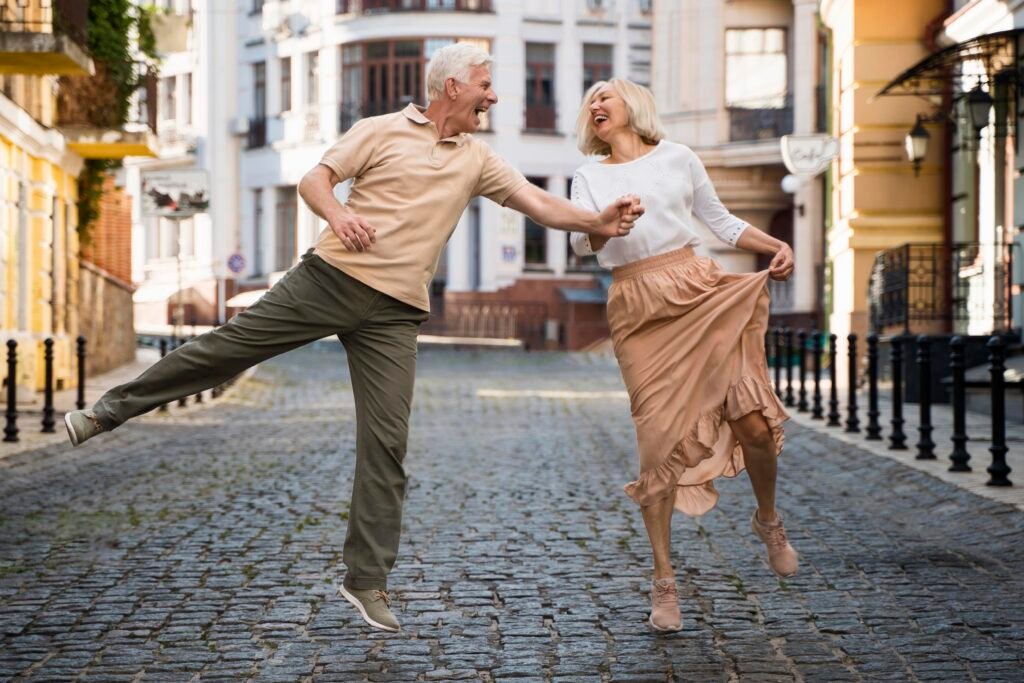When you think of dancing, you might picture elegant ballroom moves, high-energy hip hop, or fiery flamenco footwork. But beyond the artistry and excitement, dance offers an incredible range of health benefits — some of which may surprise you. Whether you’re stepping into a salsa class or flowing through contemporary choreography, dancing engages both body and mind in transformative ways.
Let’s uncover 10 lesser-known health benefits of dancing that make it one of the most rewarding physical activities you can embrace.
1. Improves Brain Function and Memory
Dance isn’t just movement — it’s mental exercise. When you learn and remember choreography, your brain forms new neural connections, enhancing cognitive function. Studies have shown that dancing regularly can improve memory and even reduce the risk of dementia. Styles like tango and waltz, which require precise steps and coordination, are especially effective at keeping your brain sharp.
2. Boosts Heart Health Without Feeling Like a Workout
Cardio is key to heart health, and dancing delivers — often without you realizing how much of a workout you’re getting. High-tempo styles like swing, hip hop, and salsa elevate your heart rate, increasing cardiovascular endurance. The best part? Because it’s fun and engaging, you’re more likely to stick with it than with traditional cardio exercises like jogging or cycling.
3. Strengthens Core Muscles and Posture
Whether you’re pirouetting in ballet or isolating your torso in belly dancing, dance demands core engagement. A strong core is essential for balance, spinal support, and overall strength. Over time, dancing can improve posture by aligning the spine and developing the muscles needed to support good form — both on and off the dance floor.
4. Reduces Stress and Improves Mood
There’s a reason people say to “dance it out.” Movement combined with music is a powerful mood booster. Dancing releases endorphins, serotonin, and dopamine — all natural chemicals that reduce stress and promote happiness. Social dances like salsa, lambada, or swing also foster community and connection, which can significantly reduce feelings of isolation or anxiety.
5. Supports Joint Health and Flexibility
Many people mistakenly assume that dance is tough on the joints — but when done properly, it actually promotes joint mobility and flexibility. Styles such as contemporary, ballet, and even folk dance involve dynamic stretches and controlled movements that encourage joint lubrication and range of motion. This can help ease stiffness and improve overall flexibility, especially in the hips, knees, and ankles.
6. Improves Balance and Coordination
Balance isn’t just for ballerinas. Dance trains your body to move with greater control and spatial awareness. Styles like tap, tango, or ballroom require precise footwork and weight shifts that fine-tune your coordination. This is especially beneficial for older adults, as improved balance reduces the risk of falls and injuries.
7. Burns Calories and Aids Weight Management
If your goal is to stay fit or lose weight, dancing can be a great calorie-burning activity. Depending on the intensity and style, you can burn anywhere from 200 to 600 calories an hour. Unlike monotonous gym routines, dancing keeps you engaged, making it easier to stay consistent. Zumba, jazz, and hip hop are particularly effective for high-energy workouts.
8. Promotes Better Sleep Quality
Engaging in physical activity like dancing helps regulate your body’s internal clock, also known as the circadian rhythm. Dancing reduces stress hormones like cortisol, which can interfere with sleep. As a result, regular dancing — especially in the evening — can help you fall asleep faster and enjoy deeper, more restful sleep.
9. Enhances Creativity and Emotional Expression
Dance is an outlet for self-expression. Unlike many sports, it encourages emotional storytelling and creative improvisation. Contemporary and modern dance especially allow for emotional exploration through movement. This type of creative engagement has been linked to improved mental health, better problem-solving skills, and a more positive outlook on life.
10. Builds Confidence and Body Awareness
One of the most profound — yet often overlooked — benefits of dance is the way it transforms your relationship with your body. Through movement, dancers develop a deeper awareness of how their body works, how it feels, and what it’s capable of. This heightened self-awareness leads to greater confidence, both in dance and in daily life. Whether it’s nailing a complex routine or simply enjoying your body in motion, dance helps you feel empowered.
Final Thoughts
Dance is far more than a form of entertainment or artistic expression — it’s a full-body, full-mind workout with lasting health benefits. Whether you’re a beginner exploring salsa or a seasoned ballet dancer, every step is a step toward better health.
At Dance Master, we believe that dance is for everyone. No matter your age or experience level, getting started is as simple as moving to the music. And now that you know all the hidden benefits, there’s even more reason to let your body move and your spirit soar.
So why wait? Choose your style, find your rhythm, and let dance change your life — one beat at a time.

